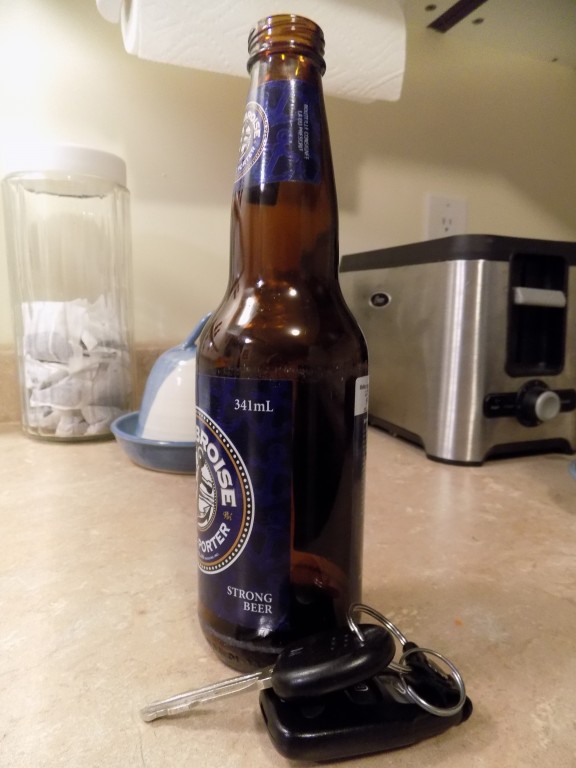Canada retreats on tougher impaired driving laws for alcohol, focuses on drugs instead
It seems as though legal marijuana has sidelined plans for tougher impaired driving laws in Canada.
Unlike in the U.S. where it is set by state governments, the federal government in Canada makes the DUI rules under the Criminal Code. Drivers in Canada must not have more than 80 milligrams (0.08) in 100 milliliters of their blood.
In 2017, the federal government was considering lowering the limit to 50 (0.05) milligrams but according to a CBC News story, Attorney General Jody Wilson-Raybould recently announced that no change would be made. Instead, the Justice Department wants to focus on legislation currently before Parliament that would create penalties for impaired driving due to drug use.
Cannabis was set to become legal in Canada in July of this year, but legislation has been slowed down in the Senate, the unelected upper house of Parliament, and legalization will not likely come until the fall.
The decision not to toughen the drunk driving threshold in Canada comes while a state legislator in New York is trying to lower the limit there from 0.08 to 0.05. In January, Assemblyman Félix Ortiz (D-Kings) re-introduced legislation to make the change.
The reaction to the federal government’s retreat was mixed from MADD Canada, the Canadian branch of Mother’s Against Drunk Driving. A statement obtained from the organization says they were disappointed but not surprised by the decision. However, MADD Canada is hopeful that the measures in the legislation related to impaired driving from drug use will lead to further reductions.
In its present form, the legislation contains provisions for drug limits for drivers, testing measures for drug-impaired drivers, and mandatory alcohol screening.
Although the federal government sets the legal blood-alcohol limits and the criminal penalties for impaired driving, provincial governments are allowed to add additional laws and penalties for impaired driving. MADD Canada noted that most jurisdictions have adopted laws that impose non-criminal penalties focused on the 0.05 to 0.08 range or have added additional penalties onto what are already prescribed under federal law.
The Ontario government calls the 0.05 to 0.08 area the “warn range.” Consequences for warn range infractions include automatic driver’s license suspensions of 3 to 30 days, mandatory education or treatment programs, administrative fines, and six months of having to breathe into an ignition interlock device that prevents a vehicle from starting if alcohol is detected on the driver’s breath.
Ontario drivers with the G1 or G2 learner’s permit driver’s licenses not allowed to have any alcohol in their bloodstream while driving. In Quebec, the same rule applies to all drivers under 22 years of age. For all drivers, police can seize vehicles and suspend licenses when offences are committed, and drivers can be sent to education programs. If a Quebec driver is found guilty under the Criminal Code, driver’s licenses can then be revoked permanently or an ignition interlock device required.
Federal penalties for impaired driving in Canada are uniform across the country. They include minimum 30-day jail sentences, minimum $1,000 fines, longer license suspensions or permanent bans from driving, and longer ignition interlock periods.
Another reason for the federal government’s reversal on making it more difficult to drive drunk could be that fewer Canadians are doing it. People who were around from the 1960s to 1980s often talk about how easy it was back then to get away with driving after having one too many. Enforcement was lighter and so were the consequences.
That all changed when governments started introducing tougher penalties and police started conducting roadside checks. In Ontario, it’s known as the R.I.D.E. (Reduce Impaired Driving Everywhere) Program. According to the most recent federal statistics from 2015, there were over 72,000 impaired driving incidents across Canada that year—a 65% reduction from 1986. The lowest rates of impaired driving were in Ontario and Quebec. Among cities with populations over 100,000, Ottawa had the second-lowest rate of impaired driving incidents and Kingston was the lowest. British Columbia had the longest average jail sentences for drunk driving at over 300 days. Quebec was second at about 275.
The statistics do show reason to be concerned about impaired driving due to drugs. They were the reason for 4% of all impaired driving incidents in Canada in 2015 – double the rate from 2009 when taking data on drug-related impaired driving began. Most impaired drivers who were using drugs were between the ages of 16 and 34.
It looks like the federal government in Canada is trying to catch up when it comes to laws against impaired driving due to drugs. The need to do so is urgent since marijuana will be legal in Canada in just a few months.
Tags: canada, impaired driving









when I was conducting the trains we were told not to use mouthwash as it contains enough alcohol to exceed the alcohol limit placed upon train crews. It seems to me that the numbers game is just for show and not effective as a deterent to hard drinkers who usually have more alcohol in their blood than the present lower limits. The government wants to be seen as doing something like “getting tough” that penalizes many more people, but leaves the problem unsolved.